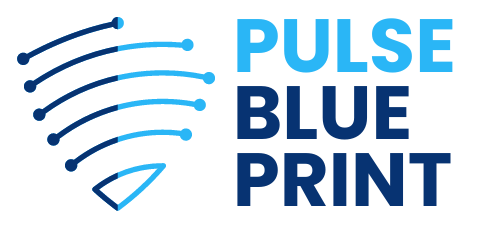Market Basket Analysis (MBA) is a powerful data mining tool used primarily in the retail sector to uncover associations between products. Imagine walking into a supermarket and noticing that peanut butter is often placed near jelly.
This isn’t a random decision; it’s the result of an MBA. By analyzing purchase patterns, retailers can gain insights into how different products relate to each other in a customer’s basket.
This knowledge isn’t just fascinating; it’s commercially invaluable, driving sales, enhancing customer experience, and optimizing store layouts.
Conceptual Framework
MBA revolves around the principle of association rules, which are essentially insights derived from patterns in data. These rules are often represented as IF-THEN statements: IF a customer buys product A, THEN they are likely to buy product B.
To evaluate the strength and relevance of these associations, several metrics are employed:
- Support
- This metric provides the frequency at which items appear together in transactions.
- It’s a measure of the overall popularity of an itemset.
- Confidence
- Confidence measures the likelihood of item B being purchased when item A is bought.
- It gives a conditional probability.
- Lift
- Lift gauges the strength of a rule over the randomness of the association.
- A lift greater than 1 indicates a meaningful relationship.
Understanding these metrics is essential because they not only quantify the relationships but also help in filtering out noise from genuine patterns.
Applications and Benefits
Market Basket Analysis (MBA) has emerged as a cornerstone in the retail and e-commerce sectors, offering a lens into the intricate web of consumer purchasing behavior. By analyzing the combinations of products that frequently co-occur in transactions, businesses can uncover hidden patterns, providing a roadmap to optimize various facets of their operations.
The applications of MBA are vast, and its benefits can be transformative, leading to enhanced customer experiences and increased profitability.
- Product Placement and Store Layout: MBA insights directly influence the arrangement of products within physical stores. For instance:
- Complementary Goods: Items that are often bought together, like chips and salsa or pencils and erasers, can be placed adjacently to encourage bundled purchases.
- Impulse Purchases: Analyzing patterns might reveal that customers buying certain planned items, like a specific brand of cereal, are more likely to make impulse purchases of, say, a chocolate bar. Such items can be strategically placed near checkout counters.
- Store Flow: MBA can inform the overall store layout, guiding customers through a journey that maximizes exposure to products they’re likely to buy together.
Online, the principles remain the same, but the execution differs. E-commerce platforms harness MBA to power recommendation engines. When a customer views a product or adds it to their cart, the system can suggest additional items based on historical co-purchase data.
This not only enhances the user experience by offering relevant suggestions but also increases the average transaction value. Beyond direct sales, MBA plays a pivotal role in inventory management.
By predicting which products are frequently bought together, retailers can synchronize their stock levels, ensuring popular combinations are always available.
This synchronization reduces the chances of stockouts for popular item combinations, leading to happier customers and more consistent sales.
Furthermore, marketing teams can tailor promotions and offers based on observed purchase patterns, making campaigns more effective and resonant with the target audience.
Techniques and Algorithms
The world of MBA is rich with algorithms, each tailored for specific scenarios. The Apriori Algorithm is foundational, designed to identify frequent itemsets by iteratively pruning the dataset. However, its iterative nature can be a drawback with large datasets.
The FP-Growth Algorithm offers a remedy. Instead of iterative pruning, it uses a tree structure called the FP-tree, which captures the dataset’s essence without storing it explicitly. This makes the algorithm faster and more memory-efficient.
The Eclat Algorithm takes a different approach. It uses a depth-first search on a vertical data representation, making it particularly efficient for dense datasets. Each algorithm has its strengths and weaknesses, and the choice often depends on the specific requirements of the analysis.
Challenges and Limitations
Market Basket Analysis (MBA) has revolutionized the way businesses understand customer purchasing behaviors, but it’s not without its challenges.
| Challenges | Description |
|---|---|
| Scalability Issues | As businesses grow and transaction data accumulates, the sheer volume can pose computational challenges. Algorithms, especially those not optimized for large datasets like Apriori, can become sluggish, hindering real-time analysis. |
| False Associations | While MBA can identify items that frequently appear together, it doesn’t always imply a genuine association. Items might co-occur due to individual popularity, leading to false positives in inferred associations. |
| Dynamic Consumer Behavior | Consumer purchasing patterns can change based on various factors like seasons, trends, or external events. COVID-19 lockdowns were a solid example. This dynamism can skew MBA results if not properly accounted for. |
| Data Sparsity | In online retail, the vast number of potential product combinations can lead to a sparse matrix of data. This sparsity makes it challenging to find meaningful associations among products. |
| Data Privacy and Regulations | With regulations like GDPR and rising data privacy concerns, businesses face challenges in how they handle and process customer data. This can limit the extent to which transaction data can be used for MBA, especially when dealing with personal or sensitive information. |
Real-world Examples

Starbucks, with its global presence, has effectively used MBA. By analyzing transaction data, they observed that customers who purchased cold brew coffee during summer months often opted for specific pastries.
Leveraging this insight, they introduced bundled offers, leading to increased sales. Another giant, Amazon, employs MBA in its recommendation system. Their “Customers who bought this item also bought…” feature is a direct application of MBA, guiding users to products that align with their preferences.
Even outside of retail, streaming platforms like Netflix or Spotify can use similar principles to recommend shows, movies, or music based on user consumption patterns, enhancing user engagement and satisfaction.
Future Trends and Predictions

The horizon of MBA is expanding with technological advancements. Integration with AI and machine learning promises hyper-personalized, real-time analyses. As big data platforms become more prevalent, MBA will be able to process even larger datasets, leading to finer, more nuanced insights.
We might also witness MBA principles being applied in unconventional sectors. For instance, in healthcare, analyzing patient treatment and medication data might predict subsequent care needs or medication combinations.
In the entertainment industry, understanding patterns in content consumption can lead to better content curation and personalized recommendations. As the digital footprint of consumers grows, the potential applications of MBA will only become more diverse and impactful.
FAQs
Are there specific software tools for MBA?
Yes, many data mining and analytics software tools, such as R, Python libraries, and commercial solutions like SAS and IBM SPSS Modeler, offer functionalities to conduct MBA.
How often should businesses conduct MBA?
The frequency depends on the business type and data volume. For dynamic sectors like e-commerce, regular analyses (e.g., monthly or quarterly) might be beneficial. For more stable industries, semi-annual or annual reviews might suffice.
Can MBA be applied to services, or is it just for tangible products?
MBA can be applied to services as well. For instance, in the hospitality industry, it can identify which services guests commonly use together, like spa treatments and room service.
How does seasonality affect MBA results?
Seasonal trends can significantly influence purchase patterns. For example, during the holiday season, certain product combinations might spike. It’s crucial to account for these variations when interpreting MBA results.
How do businesses ensure data privacy when conducting MBA?
Businesses must adhere to data protection regulations, anonymize personal data, and ensure that the data used for MBA doesn’t infringe on individual privacy rights. It’s about analyzing patterns without compromising personal information.
Can MBA insights be integrated with other business strategies?
Absolutely! Insights from MBA can be combined with other data analytics findings, customer feedback, and market research to create holistic business strategies that cater to evolving customer needs.
Closing Thoughts
Market Basket Analysis, while rooted in retail, has implications far beyond shopping carts and checkout counters. It’s a testament to the power of data and how, when analyzed correctly, it can transform businesses, drive sales, and enhance customer experiences.
As technology continues to advance, the potential applications and benefits of MBA will only grow, solidifying its place as an indispensable tool in the world of data analytics.
If you want to see more interesting takes, be sure to visit our website.
Hello, my name is James Willett. I am a marketing veteran, with decades of experience under my belt. At one point, I decided to share my experience with others, especially those who are making baby steps in marketing. Therefore, I decided to join fine folks at PulseBluePrint.com where I share my insights on all sorts of marketing. I hope you will find my insights useful.










